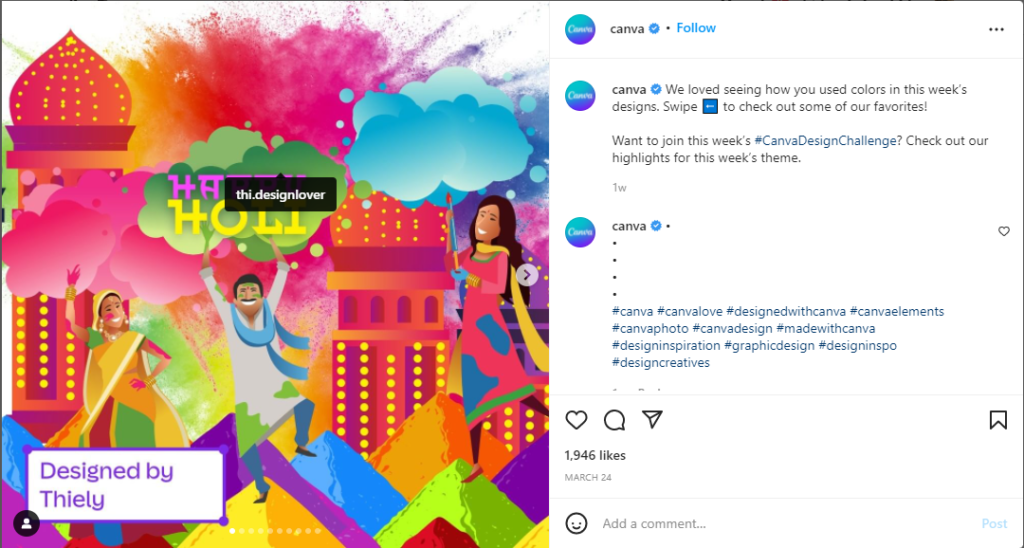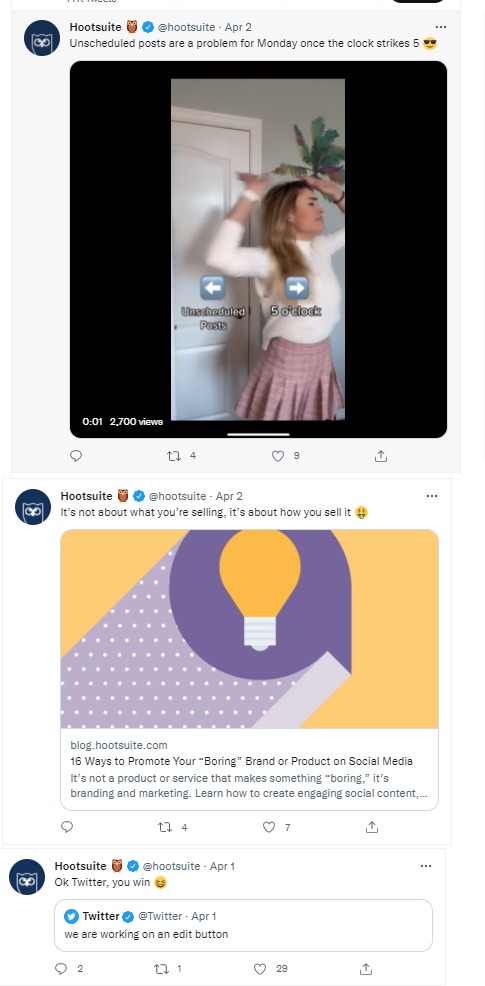Content Curation in 2022: The Complete Guide
Content creation and publishing are ever-growing domains and valuable activities for every business. According to Internet Live Stats, approximately 6 million blog posts are published daily. Imagine the amount of time taken to create these large volumes of content pieces!
However, the era of digital transformation has made it possible for businesses to deploy content technologies that have changed the way content is produced. There are efficient tools that help content writers conduct their research effectively, assist them with writing, and automate the publishing process.
In addition to this, there are various tools to measure how well a content piece is performing on the web. The innovations in technology have also given user-generated content and content curation its fair share of importance.
In this post, we will throw some light on various aspects of content curation and how it helps businesses.
What Is Content Curation?
Content curation is discovering quality content from trusted sources and sharing it with your audience.
It is the process of researching and sharing handpicked content from other trusted sources serving your industry. It does not involve building new content pieces from scratch but rather finding unique, high-quality content from industry experts and sharing the same on your website or social media pages.
It could be anything – a blog article, an infographic, an image or video, or some statistics. Although content curation sounds simple, there goes a tremendous amount of effort in research to find content that would resonate with your audience.
Content curation can be categorized into five types.
Aggregation – This means gathering topic-specific content from multiple sources and presenting them in one place.
For example, Techmeme is a news aggregator that gathers news related to the technology and IT industry and presents it on its website.

Chronology – This means presenting a visual display of events (along with their dates) regarding a specific topic, trend, or issue.
Mashups or Remixing – This means creating a fresh piece of content using unique curated content pieces regarding a specific topic.
Distillation – This means highlighting the best insights about a trending topic, usually in the form of tweets.
Trendspotting – Analyzing the current industry-specific trends and data to identify and predict new, emerging trends and ideas.
5 Most-Common Myths about Content Curation
Despite the rising popularity and wide usability of content curation, there are some myths and misconceptions about content curation that are prohibiting content teams from leveraging this amazing technique of content creation.
Let us address some of the most common myths about content curation.
1. Content curation is unoriginal and a form of stealing
It is often believed that content curation is reposting original content by simply copy-pasting the articles one finds on the web. Some marketers fear reposting others’ content might land them in legal trouble.
Content curation is stealing if and only if you claim to be the owner of the content. Remember content curation works pretty well if you supplement original content with your thoughts before posting it online.
2. Content curation follows ‘one-size-fits-all’ approach
Like most other content strategies, content curation varies from one industry to another. What may work for the SaaS industry might not work for the manufacturing industry. You need to carefully plan your content curation efforts to analyze the content that works well in your industry.
Once that is done, identifying relevant content and publishing it on various platforms is a breeze.
3. Content curation is quick and easy
Curating content requires in-depth research to identify high-quality articles. Although finding content pieces for industries like movies, music, fitness, etc. might be easy. Finding content for specialized niches can be time-consuming and difficult.
The best approach would be to dig deeper into the published content by looking at the comments on social media pages as well as websites to gain more insights into the industry trends.
4. One should refer to influencers’ posts for content curation
Every industry has some experts who produce amazing content. However, depending on such articles without understanding the motive behind their publication is fruitless. You should look out for other reputed sources as well. Try to find a link between these articles and how your followers can benefit from these articles.
5. Content curation is all about sharing a link
Although sharing a link is a part of content curation, adding value to the curated content is always a best practice. It helps you present your perspective about a certain topic with your audience. Ensure that you share your insights or thoughts along with the curated posts.
Now, let us understand why businesses should incorporate content curation in their content creation strategy.
Why Content Curation?
Content curation supplements your content strategy by providing ample opportunities to share additional resources with your followers. Here are some reasons why you should use content curation.
1. Fosters relationships
Content curation helps you build long-term relationships via networking. Every time you share a piece of content, ensure that you tag the original creator in your post. It will help you grab their attention. You could also send an email, if possible. This helps you start a conversation with the best professionals in the industry and grow your network.
2. Saves time and money
According to CoSchedule, the average time taken to create a piece of content ranges from one hour to six hours. From research to writing, optimizing content for SEO to publishing and promoting, creating new content takes time and costs a lot of money.
However, sharing articles or posts from other authoritative websites or industry leaders is not only fast but convenient as well. It helps you keep up your content calendar filled with posts and offers regular content to your followers.
Furthermore, you can use this curated content in other marketing assets like emails, newsletters, eBooks, and many other assets.
3. Introduces diversity in the content calendar
Content curation helps you add variety to your content calendar. Sharing new articles and ideas from industry experts and other websites offers multiple perspectives about certain things to your audience. Imagine a brand sharing its product features in all content pieces they create. It will be nothing less than bragging.
4. Helps boost your brand image
Proper content curation helps the audience know your expertise in the industry and how well-versed you are with the latest industry trends. It will help you position yourself as a thought leader and establish your brand as a trusted source of industry-related information. Your audience starts to view your brand as their go-to medium for information.
How to Curate Quality Content?
1. Define Your Audience
The first step towards better content curation is identifying and understanding your audience. You should define an ideal audience persona and find out the kind of content that would keep them engaged. The content you post or share should help readers in some way. Focus on creating a personal connection with your audience by sharing content that would influence their lives.
Next, try to identify the topics your audience interacts with the most. Based on that, identify the post ideas your readers would love to read. The whole idea of content curation is to provide readers with clear, unique, and top-quality information.
This short questionnaire can help you understand your audience and what content drives them toward engaging with your posts.
- What are the key topics the audience engages with the most?
- What content types receive more engagement?
- What kind of content are the competitors sharing?
- Which platform is receiving the best engagement?
- Is the existing content strategy gaining the expected traction?
2. Find Relevant Content via Thorough Research
This is the most crucial aspect of content curation. Identify the best resources of information specific to your industry and organize the same in an easily-accessible database. Keep and maintain the links of these informational pieces as well.
Remember the best article would be the one that provides value to your audience, has not been much spoken about, and the one that provides enough information for content curation.
Consider the latest industry trends while conducting research for content. This will help you stay informed and ahead of your competitors. You can also create a short survey to understand whether your audience is liking the content you share. Understanding your audiences’ preferences will help you look for content pieces with more clarity.
Ensure that you do not use a majority of curated content from a single source. It may come out as promotional and your audience might not engage with the same.
Ask yourself these questions when you shortlist articles or posts for content curation.
- Will my audience benefit from this content piece? If yes, how will it help?
- Will this content piece go well with my audiences’ perception of my brand?
- Does this content piece help my audience in solving their problems or challenges?
- Is this content piece worth sharing?
3. Add Your Thoughts to the Content
Content curation is indeed about finding relevant content pieces and sharing the same with your followers. However, you can go a step further by adding in your thoughts and introducing a pinch of extra value to the curated article. It could be anything – a short paragraph introducing the article or letting your audience know how the article could help them with their questions.
For example, if you are sharing a long-form article about a certain topic, you can create
a roundup of that article in the form of an infographic before sharing it with your audience.
Remember you do not necessarily have to do this for every post or article you share.
4. Give Credit to the Owner/Content Creator
Never share curated content with your audience without giving credits to the content creator. Whether it is an individual content creator or a company, always ensure that you tag the respective creator and link the article or post to the source. You can also place the link to the original post or the website’s social handles at the bottom of the post.
Crediting sources serve as proof that the curated content is well-researched and comes from a credible source. Besides, crediting also helps in improving the original owner’s search engine rankings as it serves as a backlink. It plays a significant role in boosting your SEO rankings as well.
Take a look at the screenshot below. Check out how Canva is giving credits to the designers by tagging them in the pictures.

5. Promote the Content
The next step is sharing the curated content with your audience and promoting the same. You can leverage a multitude of channels for content promotion right from your website, mobile apps, social media pages, and blogs, to emails, newsletters, and press releases. Ensure that you share such content regularly and maintain the frequency of the posts. Do not worry that your original posts might get lost in the heaps of curated posts.
You should plan out your content calendar in such a way that it is a healthy mix of both, original and curated posts.
Take a look at Hootsuite’s Twitter feed. You can see the feed is filled with original as well as curated posts.

There are many tools available to help you streamline your content curation and promotion activities. We shall have a look at them in the next section.
6. Analyze the Content Performance
The last step is analyzing how well the curated content is performing on various channels. Monitoring the performance of content curation can help you improve your strategy and optimize the same for future campaigns. You can track the performance based on the post reach, the engagement it has received, and sales.
In addition to this, you can track the number of leads generated or subscriptions received and measure the conversions.
Now, let us have a look at the best content curation tools and software that will certainly help you curate content seamlessly.
Best Content Curation Tools
There are various tools that can help you boost your content curation efforts. RSS feed readers, social media management platforms, and content analyzers are some of them.
Given below are a few tools that can help.
Feedly – Just like an RSS feed reader, this tool aggregates content from various websites belonging to your industry and presents it in a single location. You can also categorize these articles according to the best keywords and latest trends.
Google News Alerts – This excellent tool by Google notifies you whenever there is news published about the topic you have created alerts for.
BuzzSumo – This content analyzer helps you identify the most shared content based on your target keywords.
UpContent – This is a content curator that analyzes relevant articles across the web, collects them together, and personalizes the content-sharing message for you.
Curata – Curata goes a step further than UpContent by automatically publishing your curated content on desired platforms according to your requirements.
Hootsuite – A social media management platform that helps you plan your social media calendar for original as well as curated posts and schedule them for publication on desired social platforms without any manual intervention.
Final Takeaways
A successful content strategy has both content creation and content curation. While content creation helps you attract the audience to your brand, content curation helps you keep them engaged. Offering the right content mix is the key to the success of any content strategy.
Understand your audience, select high-quality, value-offering content, and share the same with your audience on various channels. Engage with your audience regularly and see your content curation efforts soar high.









